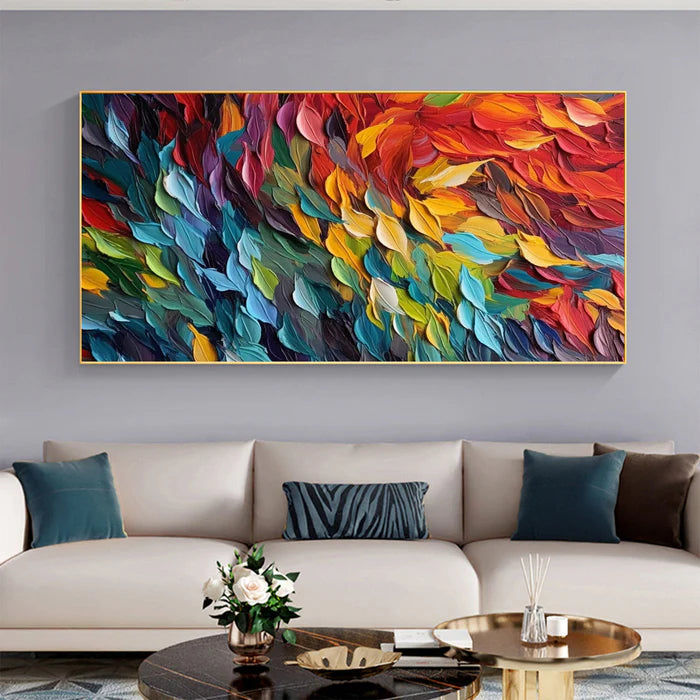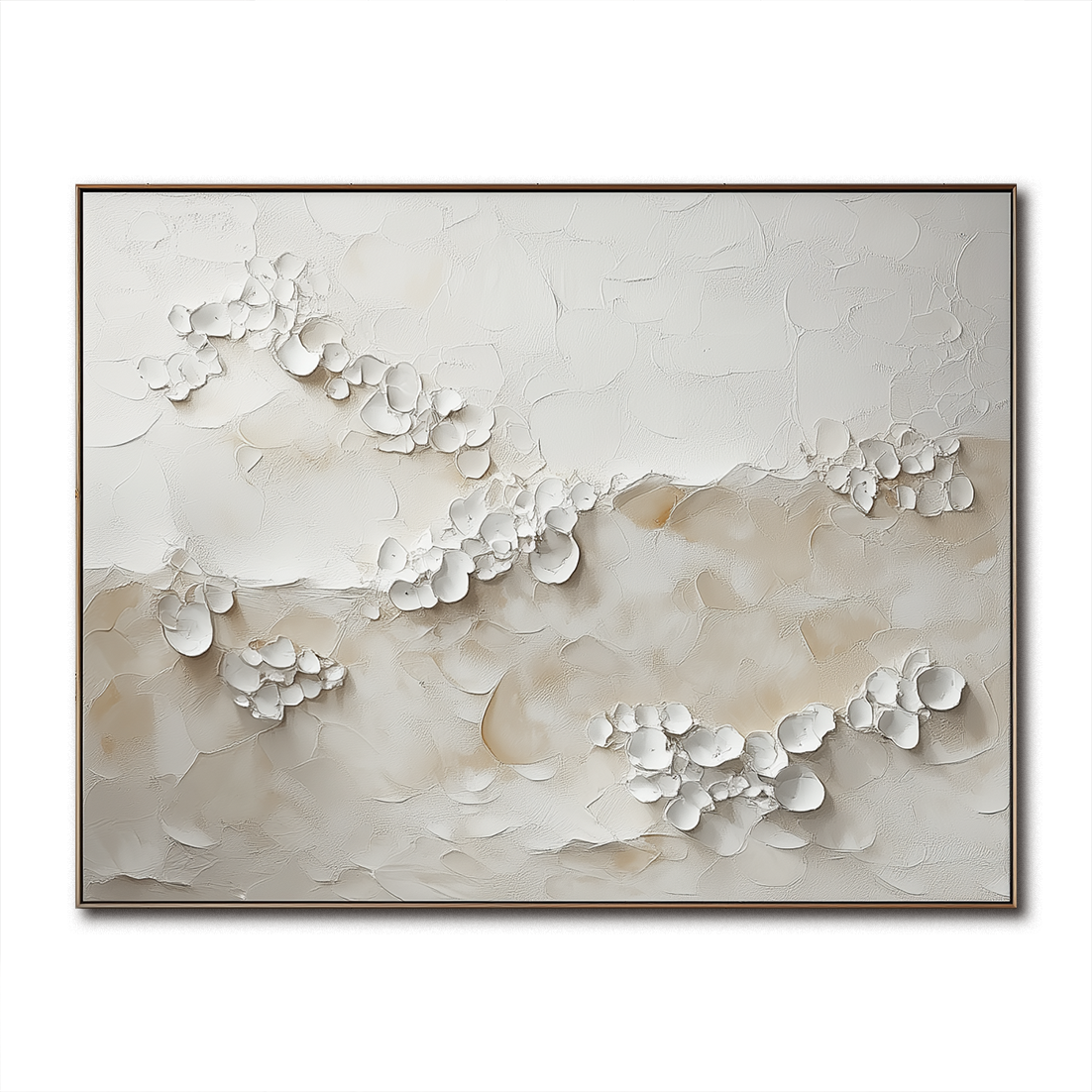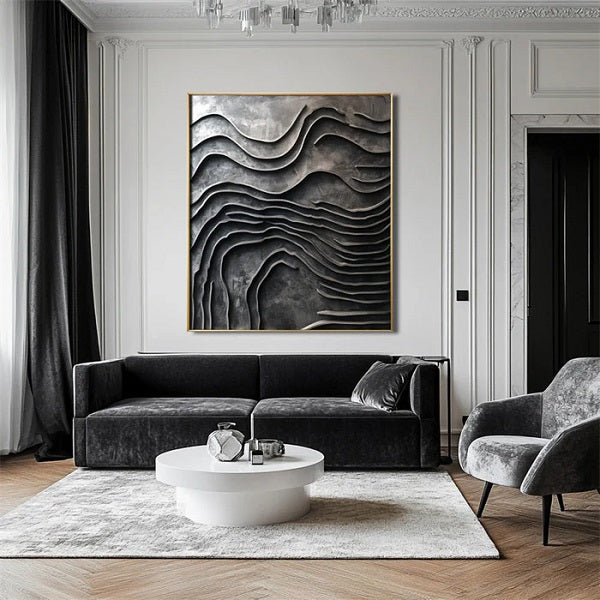Beyond the Flat Canvas - Welcome to the World of 3D Wall Art
Have you ever walked into a room and felt that something was missing? The furniture is perfect, the colors are right, but the walls feel lifeless. What is textured art, and could it be the secret ingredient your space needs? This art form moves beyond the flat canvas, inviting you to experience art not just with your eyes, but with a sense of touch and depth. It transforms a simple wall into a dynamic feature. Ready to discover this captivating world? You can to see for yourself. This guide will walk you through everything you need to know about this unique art form.

Defining Textured Art: More Than Just a Painting
So, what truly sets textured art apart? It's an art form where the physical surface of the artwork is as important as the image itself. Artists intentionally build up layers on the canvas, creating a three-dimensional surface that you can see and feel. This sculptural quality is what makes it so much more than just a painting.
The Essence of Tactile Beauty: What Makes Art "Textured"?
The defining characteristic of textured art is its physical dimension. Artists achieve this tactile beauty using various materials and techniques. Think of thick, sweeping strokes of paint, or the addition of materials like sand, fabric, or plaster. This creates a surface rich with peaks, valleys, and unique formations. It’s an invitation to a sensory experience. This style adds a layer of sophistication to any room.
Textured Art vs. Traditional Painting: Understanding the Key Differences
How is this different from a standard painting? A traditional painting primarily exists in two dimensions. Its magic lies in creating an illusion of depth on a flat surface. Textured art, however, embraces its three-dimensional reality. The shadows it casts and the way light plays across its surface are integral parts of the artwork. This physical presence gives it a unique, commanding energy that flat prints or paintings simply cannot replicate.
The Rise of Sculptural Wall Art in Modern Interiors
Why has this style become so popular in modern interiors? As design trends lean towards minimalism and authenticity, textured art offers a perfect solution. It adds immense character and warmth to a space without needing loud colors or complex imagery. This form of sculptural wall art serves as a focal point, bringing a handcrafted, organic feel that contrasts beautifully with clean, modern lines.
Exploring the Techniques Behind Heavy Texture Art
How do artists create such captivating surfaces? The magic lies in their techniques, which transform simple materials into works of profound depth. Understanding these methods can deepen your appreciation for each piece of heavy texture art.
The Classic Palette Knife Painting: Creating Bold, Impasto Strokes
One of the most iconic techniques is palette knife painting. Instead of brushes, artists use palette knives to apply thick layers of paint directly onto the canvas. This method, known as impasto, creates bold, expressive strokes with a distinct, almost sculptural quality. It allows for sharp edges and rich, buttery textures. Many pieces of our utilize this powerful technique.

Layering and Building Depth: The Artist's Secret to Dimension
Creating depth is a meticulous process of layering. Artists often apply multiple layers of paint, gesso, or modeling paste, allowing each one to dry before adding the next. This patient technique builds up the physical dimension of the artwork, creating a complex surface where light and shadow can dance. It's this careful construction that gives the art its profound sense of depth.
Incorporating Mixed Media: From Sand to Gold Leaf
To push the boundaries of texture, many artists incorporate mixed media. This can include anything from natural elements like sand and wood to luxurious touches like gold leaf or metallic foils. These additions not only enhance the tactile quality but also add another layer of visual complexity and meaning to the canvas art.
Why Choose Textured Wall Art? The Benefits for Your Home
So, why choose textured wall art for your space? Beyond its initial visual appeal, this art form offers several unique benefits that can fundamentally transform your home's atmosphere. It’s an investment in both aesthetics and ambiance.
Creating a Powerful Focal Point and Visual Interest
A piece of textured art is a natural conversation starter. Its dimensional quality immediately draws the eye, creating a powerful focal point in any room. Even a monochromatic piece can command attention due to its intricate surface, adding a layer of visual interest that keeps the space from feeling static or boring.
How 3D Wall Art Interacts with Light and Shadow
This is where textured art truly shines. As the natural light in your room changes throughout the day, so does the artwork. The shifting light and shadow play across the textured surface, revealing new details and creating a dynamic, ever-changing display. This living quality makes the art feel constantly new and engaging.

Evoking Emotion and Connection Through Touch and Sight
Art is meant to be felt, and textured art takes this literally. Its tactile nature creates a deeper, more personal connection. The urge to reach out and touch the surface adds a sensory dimension to the experience, evoking emotions in a way that purely visual art cannot. It makes a house feel more like a home.
How to Incorporate Textured Art into Your Decor
Feeling inspired to bring this art form into your home? Integrating textured wall art is easier than you think. Here are a few tips to help you find the perfect piece and make it the star of your room.
Finding the Right Piece for Your Style: Minimalist, Wabi-Sabi, or Bold
Textured art is incredibly versatile. For a minimalist space, a monochromatic white piece with subtle textures can add warmth without clutter. If you love the imperfect, organic feel of wabi-sabi, look for pieces with earthy tones and raw materials. And if your style is bold, a large-scale abstract painting with dramatic impasto strokes can make a stunning statement. You can in our diverse collections.

Tips for Placement and Lighting to Maximize Impact
Where you hang your art matters. Place it where it will receive good natural or artificial light to accentuate its textures. A spotlight from above or the side can create dramatic shadows and highlight the piece's dimensionality. Consider placing it on a main wall in your living room or entryway to create an immediate impact.
Embrace the Dimension: Your Journey into Textured Art Starts Here
Textured art is more than just a decoration; it's an experience. It brings depth, character, and a unique emotional connection to your home. By embracing its three-dimensional beauty, you can transform any space from ordinary to extraordinary. Which room in your home would you transform with a piece of stunning textured art?
Your journey into this captivating world has just begun. and find the piece that speaks to you.
FAQ: Frequently Asked Questions About Textured Art
Is textured art more expensive than regular paintings? Not necessarily. While the process can be more labor-intensive, the price of any art depends on the artist, size, and materials. At Artextured, we offer a wide range of by selling directly from our artists, ensuring you receive incredible value for a handcrafted piece.
How do I clean a piece of heavy texture art? Cleaning requires a gentle touch. For light dust, a soft, dry paintbrush or a can of compressed air (held at a distance) works best. Avoid using water or chemical cleaners, as they can damage the delicate surface.
Can textured art work in a small room? Absolutely! A well-chosen piece can actually make a small room feel more interesting and less boxy. Opt for a piece with a lighter color palette and more subtle textures to add depth without overwhelming the space.
What is the difference between textured art and impasto? Impasto is a specific technique used to create textured art. It refers to the application of thick paint that stands out from the canvas. Textured art is the broader category of art that includes impasto as well as many other techniques, like using mixed media or modeling paste. You can




